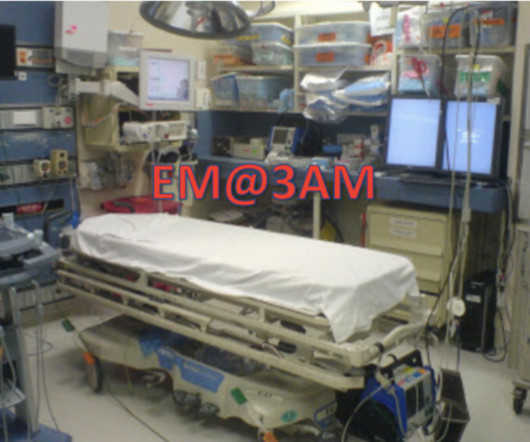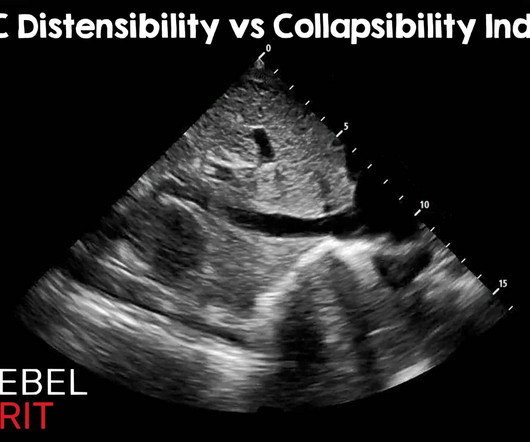EM@3AM: Brainstem Strokes
EMDocs
MAY 11, 2024
Answer : Brainstem stroke specifically in the pons resulting in locked in syndrome. CT head without contrast 1 is performed and reveals the following: Question: What is the diagnosis?

EMDocs
MAY 11, 2024
Answer : Brainstem stroke specifically in the pons resulting in locked in syndrome. CT head without contrast 1 is performed and reveals the following: Question: What is the diagnosis?

EMDocs
JANUARY 11, 2025
A 75-year-old woman who is bedridden after a stroke presents to the ED from a nursing facility with abdominal pain and constipation. Stercoral colitis in the emergency department: a review of the literature. International journal of emergency medicine, 17(1), 3. Annals of emergency medicine, 82(1), 3746.
This site is protected by reCAPTCHA and the Google Privacy Policy and Terms of Service apply.

RebelEM
FEBRUARY 24, 2025
RESUS SCENARIO Picture this: you just arrived at your shift at the local emergency department. Of course, there are other methods of assessing fluid tolerance : Capillary refill evaluation, passive leg raise, central venous pressure measurement, pulmonary artery wedge pressures, stroke volume variation, pulse pressure variation, etc.

EM Literature of Note
OCTOBER 14, 2024
link] “Empathy and clarity in GPT-4-Generated Emergency Department Discharge Letters” The cold, unfeeling computer generates better feels than emergency clinicians. Bland treacle, no doubt, but generic bland treacle will beat the terse output of a distracted human any day.

EMDocs
JANUARY 29, 2024
Introduction: Neurologic emergencies are common in the Emergency Department (ED), and blood pressure management is critical to immediate management. This article will discuss blood pressure goals and preferred pharmacotherapy for non-traumatic ischemic and hemorrhagic strokes.

The Skeptics' Guide to EM
OCTOBER 3, 2020
Date: October 2nd, 2020 Guest Skeptic: Dr.Barbra Backus is an emergency physician at the Emergency Department of the Erasmus University Medical Center in Rotterdam, the Netherlands. Ticagrelor and Aspirin or Aspirin Alone in Acute Ischemic Stroke or TIA. He is a non-smoker, not diabetic and has never had a stroke before.

The Skeptics' Guide to EM
AUGUST 19, 2023
I responded by posting the 2013 SGEM episode on INTERACT-2 ( SGEM#73 ) which showed no statistical difference between intensive (<140 mmHg) and guideline directed (<180 mmHg). Case: A 67-year-old male presents to the emergency department obtunded with left hemiplegia. Symptoms began just prior to presentation.
Let's personalize your content